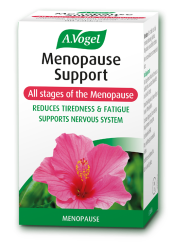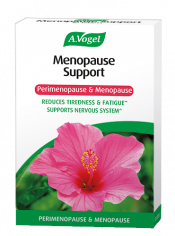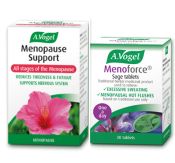Read the full video transcript below
Today's topic
Hello, and welcome to my weekly video blog A.Vogel Talks Menopause. Now here you are finally getting off to bed after a hard day’s work, and you’re looking forward to hopefully to a good night sleep, and suddenly your legs start twitching and going all over the place, it’s woken you up and you can’t get back to sleep. This is called restless leg syndrome, and it is actually very common in the menopause.
It’s horrible. It can be extremely painful, and we know that disrupted sleep during the menopause can cause all sorts of problems. It can affect our immune system, it can make us really tired, it can make us fatigue, it can give us anxiety, and it can affect how we deal with symptoms the following day.
So what actually causes this?
Well, low oestrogen, falling oestrogen is the main factor. And what falling oestrogen can do…one of the things it does is it can affect your circulation. It can make your circulation more sluggish. A lot of women find they end up with varicose veins, or they can get swollen ankles or swollen feet. And all these things together can actually contribute to restless leg syndrome. We know that if you sit for too long – so if you’re like me, you work in an office – it’s really important to get up and move about on a regular basis. We know that standing for too long can be a problem as well, and wearing high heels. So maybe try flat shoes for a few days, because you might find that that helps quite quickly.
We know that lack of exercise can be a factor as well. Lack of exercise can affect our lymph system, and our lymph system is very important for keeping those swollen ankles and swollen feet at bay. So do a little bit of exercise on a regular basis. Even just 10 – 15 minutes walking a day. And some people find at night, before they go to bed, to actually put their feet up just slightly higher than the hips and maybe relax like that for 10 or 15 minutes, if you can do that.
We know that weight gain can be a factor as well, and an awful lot of us end up putting on weight during the menopause, and this is really quite a big issue by itself. We know that low iron can be a factor too, and especially if you’re just approaching the menopause and you’re getting those long, prolonged heavy periods, this can cause low iron. So the two together can be a big factor with restless legs.
| Think your restless legs could be related to something other than the menopause? Read our article on the 7 reasons for restless legs at night. |
So what can you actually do to help yourself here?
First of all, really important, do get this checked out by your doctor, just to make sure that there’s nothing else going on. But one of the loveliest herbs for this is the Horse Chestnut, and Horse Chestnut can help to strengthen the veins, it can help to improve venous circulation. We recommend it a lot for varicose veins, and it can help with swollen ankles and your hot, tired, achy legs as well, which happens to us a lot in the summer.
You can also look at the Horse Chestnut gel. This is very soothing, and if you actually put the tubes in the fridge in the summer, it’s lovely and cooling when you come home from work. And it’s great for flying if you find that when you’re flying and you take your shoes off and then you can’t get them back on at the other end, you can use the gel on a regular basis.
The other things that you can do are really dietary ones, so remember the water. Every single week I talk about water, but it’s really important here, because dehydration can affect your circulation, and dehydration can be a contributory factor for those jumpy legs and swollen ankles and feet as well. You need to look at your diet. Get plenty of magnesium in there, as always, one of the most important minerals in the menopause, and this is really good for helping to calm restless legs.
Muscle cramps
Now, a lot of women find rather than the restless legs, they end up getting muscle cramps when they go to bed, or you can actually end up with pins and needles as well. These are also signs of low magnesium, so taking a magnesium supplement, getting loads in your diet can be very beneficial for this as well.
The other thing you can get now which would be really useful is you can get a magnesium skin spray, and that can actually be applied to the legs just before you go to bed.
Until next week...
So if you do get restless legs, have a try at some of these tips, and let me know how you get on, and I’ll look forward to talking to you next week on A.Vogel Talks Menopause.









